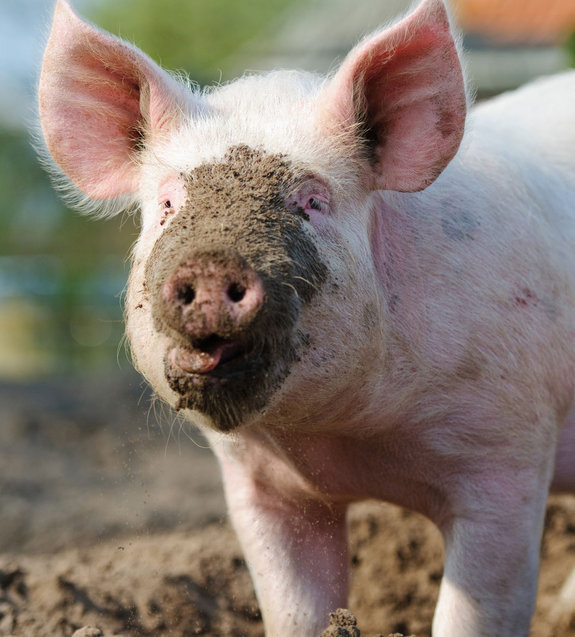Experts Fear Airborne Spread of Deadly Pig Virus

A deadly virus that's just recently appeared in the United States is killing off millions of pigs nationwide, and experts believe it may have a dangerous way of spreading: on the wind.
The porcine epidemic diarrhea virus, or PEDV, was long assumed to be spread only by direct contact, but now experts say it may be carried on airborne dust particles. "I would not rule it out," Dr. Montserrat Torremorell of the University of Minnesota's College of Veterinary Medicine, told Reuters. "There is a chance that airborne contaminated feces may have played a role in the rapid dissemination" of the disease, she said.
And PEDV strikes young pigs with menacing force: The mortality rate among piglets is almost 100 percent. Older pigs usually get sick but eventually recover, according to Pork magazine. "In the blink of an eye, 30,000 pigs were dead," John Prestage, senior vice president at Prestage Farms in Oklahoma, told Reuters. [10 Deadly Diseases That Hopped Across Species]
PEDV was initially seen in Europe in the 1970s. It soon spread through Asia and first showed up in the United States in April, Reuters reports. It's difficult to say how many pigs nationwide may have contracted PEDV or died from it: The illness is not considered "reportable," meaning that pork producers are not obligated to report an outbreak to agriculture officials. Nonetheless, by Sept. 8, more than 610 farms were confirmed to have pigs with the disease.
The virus is not zoonotic, meaning it has not yet "jumped species" to infect humans or other animals, according to a statement from the National Pork Board. But that could change: Recent research has revealed that 13 zoonotic viruses infect and kill an estimated 2.2 million people each year. Additionally, the United States is one of several regions worldwide that are considered hotspots of "emerging zoonoses," diseases that are newly infectious to humans.
PEDV does not affect food safety, according to the National Pork Board, and properly prepared ham, bacon and other pork products remain completely safe to eat. If the disease continues to spread, however, it may affect pork production, which could result in significantly higher prices for pork products in the coming months.
Third-generation Kansas hog farmer Nathan Smith said he is convinced the disease is airborne. He lost about 15,000 piglets this summer, or about $1 million worth of livestock. "It moved too fast for tires, too fast for feet," Smith told Reuters. "The only thing that touched each [pig] was the wind."
Get the world’s most fascinating discoveries delivered straight to your inbox.
Follow Marc Lallanilla on Twitter and Google+. Follow us @livescience, Facebook & Google+. Original article on LiveScience.



